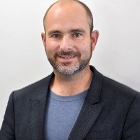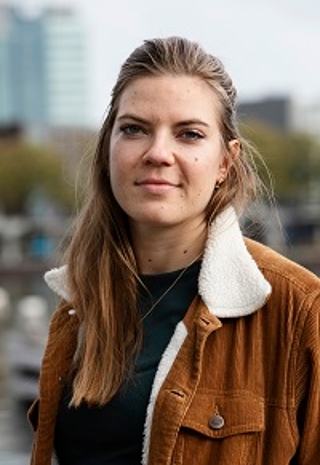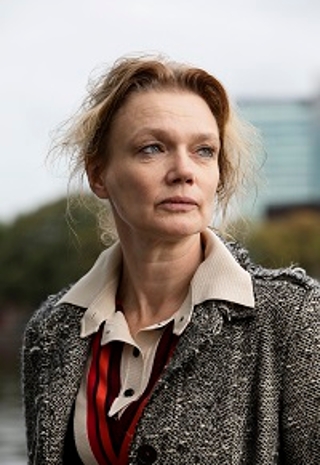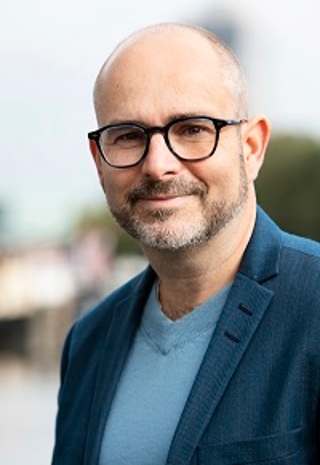
Using a touch screen to talk about the future of Amsterdam
At the Amsterdam University of Applied Sciences (AUAS), we work with organisations and companies on the major social issues of today and tomorrow: sustainability, digitalisation and diversity. As good as that sounds, what exactly does it mean?
video over project Arcam
A scale model of a city or building can be a good start to a conversation. What should Amsterdam look like fifty years from now? How can we provide enough housing in so few square metres? Still, the possibilities of scale models are limited. AUAS students are investigating how to use digital media to better shape the conversation about Amsterdam.
How can we use scale models and digital technology to teach Amsterdam’s residents about the circular economy? Sophie de Haan (Master’s student in Digital Design) and her fellow students set to work on this question. “We worked with experts from the AMS Institute and the City of Amsterdam, both specialised in visualising big data on waste streams. Together, we looked at storytelling techniques, to bring those abstract figures into focus.”

A mountain of waste the size of the A’DAM Tower
For example, telling people how many tonnes of electronic waste are thrown away every day probably won’t resonate much, but when you compare it to a mountain of waste as big as the iconic A’DAM Tower on the banks of the IJ River, it becomes easier to visualise. “We also have a visualisation of how much waste is created in Amsterdam. That is equivalent to 67 cruise ships. We made a digital map to go with it, on which you can see the ships popping up.”
For the Architecture Centre of Amsterdam (Arcam), these techniques offer a means to conduct a conversation about the city's future in new ways. “In 2018, we started investigating whether we could make a scale model of the city of Amsterdam,” says Arcam Director Indira van ’t Klooster. “But along the way we came to the conclusion that a good conversation about the future of the city also needs digital layers, in order to view things in different scales, or to allow for more interaction with the public.”

Sophie and her fellow students developed a story for people to walk through using a touch screen. Through that story they are informed about the municipal authority’s plans to make Amsterdam’s economy completely circular by 2050. “So the question we asked ourselves is: how can we make the conversation even more interesting and interactive, so that more people come to understand what Amsterdam could look like in the future, and what choices will have to be made”
Adding a fourth layer to urban models
This is also the aim of the 4D-Citymaking project, says Professor of Civic Interaction Design Martijn de Waal. “The project is called 4D-Citymaking, because you actually add a fourth layer to urban models by means of digital technology.” The project explored various technologies, from augmented reality and projection mapping to the digital visualisations Sophie de Haan has been working on.
On a smaller scale, this is also what Martijn is concerned with in his research at the AUAS. “I research how new platforms, interactive experiences and online services can help shape the conversation between governments and citizens in new ways. How can public values related to democracy, diversity and sustainability be anchored in an emerging network or platform society?”
Arcam is an example of an organisation that is making the effort, Sophie says. “It really is a ‘juicy’ place, not so municipal and dry. They use very experimental forms for creating and talking about a city.”

Working with students is very beneficial in this respect, according to Indira. “I always find it really enjoyable. It’s an interesting way for students to research something in practice in a more intuitive way. And it’s very educational for us too, because you experience what works and what doesn’t, step by step.”
Creative design for social issues
Sophie has been designing as a freelancer for some time now, but says she benefited greatly from the 4D-Citymaking project. “I’ve always been more interested in social design, which is about using creative design to solve social issues together with others,” she says. “Working together with others, not just designers, is something I learned at the AUAS.
At Arcam, they are already looking at how the new digital storytelling techniques can be used on a larger scale. “This project has helped us understand what is possible from a technological perspective,” says Indira van ’t Klooster. “That knowledge is very valuable for the further development of our 5D ExpoLab.” In this expolab, Arcam visualises current spatial developments with data visualisations such as those made by Sophie and her fellow students. This enables Amsterdam’s residents to talk about the future of the city with the help of the latest digital applications.
